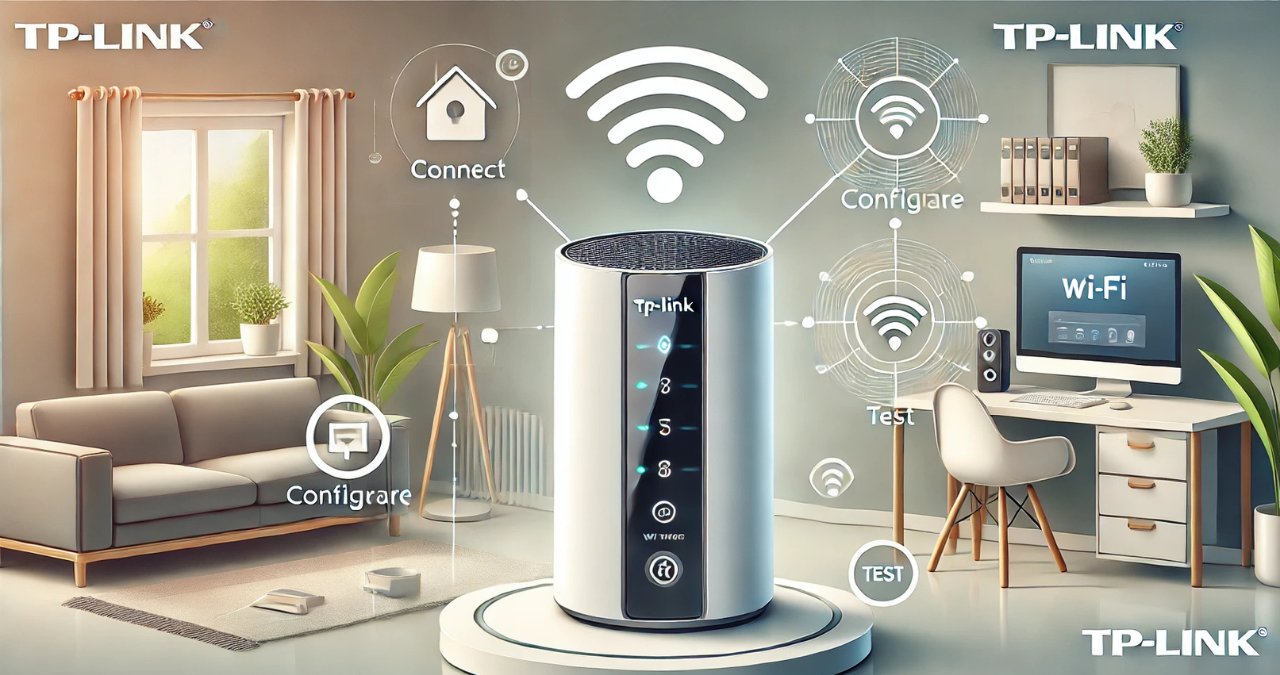In today’s TP Link Extender setup world, having a strong and consistent Wi-Fi connection in every corner of your home or office is essential. However, no matter how powerful your router is, there are often areas where the Wi-Fi signal is weak or completely unavailable. This is where a Wi-Fi extender like the TP-Link comes in handy. TP Link Extender setup are designed to boost your Wi-Fi coverage by amplifying the signal from your router, ensuring a stable and fast connection in hard-to-reach areas. In this comprehensive guide, we’ll walk you through the entire process of setting up your TP-Link extender, from understanding the device to troubleshooting common issues.
Understanding TP Link Extender setup Extenders
What is a TP Link Extender setup?
A TP Link Extender setup is a device that acts as a bridge between your router and the areas with weak or no Wi-Fi coverage. By receiving the TP Link Extender setup from your router and amplifying it, the extender extends the reach of your Wi-Fi network, helping you eliminate dead zones and achieve a more stable connection. TP-Link extenders are typically easy to set up and are compatible with most Wi-Fi routers, making them an affordable and practical solution to improve Wi-Fi coverage.
Benefits of Using a TP-Link Extender
There are several reasons to invest in a TP Link Extender setup. First and foremost, it helps eliminate dead spots in your home or office. Whether in a large house or one with multiple floors, your Wi-Fi signal can struggle to reach certain rooms or areas. A TP-Link extender ensures that every corner of your home gets a strong Wi-Fi signal. Additionally, TP-Link extenders can improve the speed and reliability of your connection, especially in areas where the signal strength is weak.
Another major benefit is the affordability and ease of use. Setting up a TP-Link extender is typically simple and requires no technical expertise. Options are available for different needs, whether using a single device or covering multiple floors. TP Link Extender setup come in various models to suit your specific requirements.
Different Models of TP-Link Extenders
TP-Link offers a range of Wi-Fi extenders with varying features and specifications. Popular models include the RE200, RE305, and RE450, each designed to cater to different user needs. The RE200, for example, offers an excellent value-for-money option, ideal for extending Wi-Fi coverage in smaller spaces. The RE305 and RE450, on the other hand, offer improved speeds and coverage for larger areas, with dual-band support for faster, more reliable connections. When selecting a model, consider factors such as the size of the area you need to cover and your internet connection.
Preparing for the TP-Link Extender Setup
Check the Requirements
Before starting the setup process, it’s essential to ensure you have everything you need. First, make sure you have access to a power outlet near the area where you plan to place your TP-Link extender. It should be within range of your router, ideally halfway between the router and the area where the Wi-Fi signal is weak.
Next, ensure that your router is working correctly and has an active internet connection. Your TP-Link extender must connect to the router’s network, so a stable connection is vital. If you’re planning on setting up the extender using the web interface, you’ll need a laptop or smartphone with a web browser. For app-based setups, you’ll need to download the TP-Link Tether app.
Unbox and Identify Parts
Once everything is in place, it’s time to unbox the extender and identify the parts. A typical TP-Link extender package includes the main extender unit, a power adapter, an Ethernet cable, and a quick start guide. The power adapter plugs the device into an electrical socket, while the Ethernet cable allows you to connect your extender to the router for initial setup if needed.
Please take a moment to read through the quick start guide that comes with the extender. This guide provides specific instructions for your model, but most TP-Link extenders follow similar setup procedures.
Download the TP-Link Tether App
Consider downloading the TP-Link Tether app on your smartphone or tablet for a smoother and more intuitive setup. This app allows you to manage and configure your extender directly from your device, making setting up, monitoring, and managing your Wi-Fi network easier. The app is available for iOS and Android and can be found in the respective app stores.
Setting Up Your TP-Link Extender
Step-by-Step Instructions for Setup
One of the easiest ways to set up your TP-Link extender is the WPS (Wi-Fi Protected Setup) feature. This method lets you connect your extender to your router without entering passwords. To use WPS, press the WPS button on your router and your TP-Link extender. The WPS button on the extender is typically located on the front or side of the device. Once both devices detect each other, the extender will automatically establish a connection with your router, and the indicator light will turn solid.
This method is ideal for users who want a quick and hassle-free setup, especially when you might not want to log into the web interface or app. However, ensure that your router supports WPS; this feature is essential for the setup process.
Manual Setup via Web Interface
If you prefer a more hands-on approach or if your router doesn’t support WPS, you can manually set up your TP-Link extender via the web interface. To start, plug the extender into an electrical outlet and connect your computer or smartphone to the extender’s default Wi-Fi network. Open a web browser and enter the extender’s default IP address into the browser’s address bar. Typically, this is “192.168.0.254.”
You will be prompted to log in with the default credentials (usually provided in the quick start guide). Once logged in, follow the on-screen instructions to select your router’s Wi-Fi network and enter the password. You can also configure your extender’s network name (SSID) and password, ensuring it matches your existing network or setting it up as a separate one.
Using TP-Link Tether App for Setup
For a seamless setup experience, consider using the TP-Link Tether app. Once you’ve connected your extender to your smartphone, the app will guide you through the setup process. The app will automatically detect your router and help you configure the extender’s settings. This is a great option for users who prefer setting up their devices using smartphones, as it provides an intuitive interface and easy-to-follow instructions.
Optimizing Your TP-Link Extender Setup

Choosing the Ideal Placement for Your Extender
The placement of your TP-Link extender is crucial to ensure optimal performance. Place the extender halfway between your router and the area with weak Wi-Fi. Avoid placing it too close to the router, as this won’t extend the signal far enough. Similarly, putting it too far from the router may result in a weak connection, defeating the purpose of using an extender.
Additionally, avoid obstructions like thick walls, large metal objects, and appliances that may interfere with the Wi-Fi signal. Experiment with different placements to find the sweet spot with the best signal strength and coverage.
Testing the Wi-Fi Coverage After Setup
Once you’ve set up your TP-Link extender, it’s time to test the Wi-Fi coverage. Move to the areas that previously had weak or no signal, and check if the extender has improved the connection. You can use your smartphone, tablet, or laptop to test the signal strength by connecting to the extender’s network. Use a Wi-Fi analyzer tool for more detailed signal strength and coverage insights.
If the signal is still weak in certain areas, consider adjusting the extender’s position or performing a reset and trying again.
Fine-Tuning Settings for Maximum Performance
Take advantage of your TP-Link extender’s settings to maximize its performance. You can configure it to operate on both the 2.4GHz and 5GHz frequency bands for better coverage and faster speeds. If your devices support dual-band Wi-Fi, connect them to the 5GHz band for better speed, especially for activities like streaming and gaming. You can also manage connected devices and bandwidth through the web interface or the TP-Link Tether app.
Conclusion
Setting up your TP-Link extender is straightforward and can significantly improve your Wi-Fi coverage and network performance. You can easily extend your network’s reach by understanding the device, preparing for the setup, and following the step-by-step guide. With a few adjustments, you can ensure that your home or office enjoys seamless Wi-Fi coverage in every corner.
FAQs
- How do I reset my TP-Link extender to factory settings?
- Press and hold the reset button for 10 seconds to reset your TP-Link extender until the device restarts.
- Why is my TP-Link extender not connecting to my router?
- Check if the extender is within range of your router, ensure the router is working, and verify that the correct Wi-Fi credentials are entered.
- Can I set up a TP-Link extender without a WPS button?
- Yes, you can manually set up your extender via the web interface or the TP-Link Tether app.
- What is the ideal placement for my TP-Link extender?
- Place the extender midway between your router and the area with poor coverage, avoiding obstacles like thick walls and metal objects.
- How do I update the firmware of my TP-Link extender?
- Log into the web interface or use the TP-Link Tether app to check for firmware updates and follow the prompts to update the extender.
You May Also Read: https://timebusinesswork.com/asus-vivobook/


